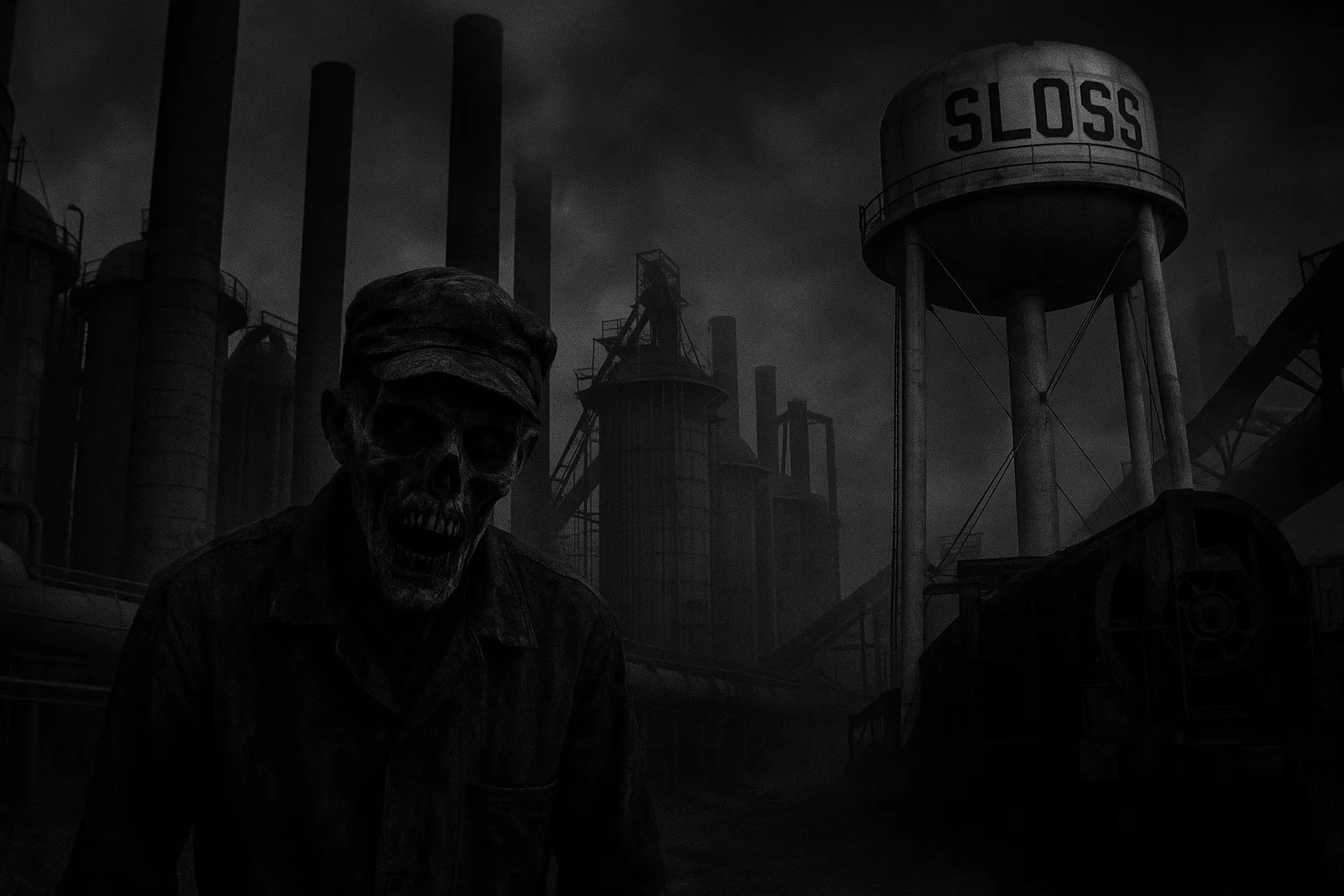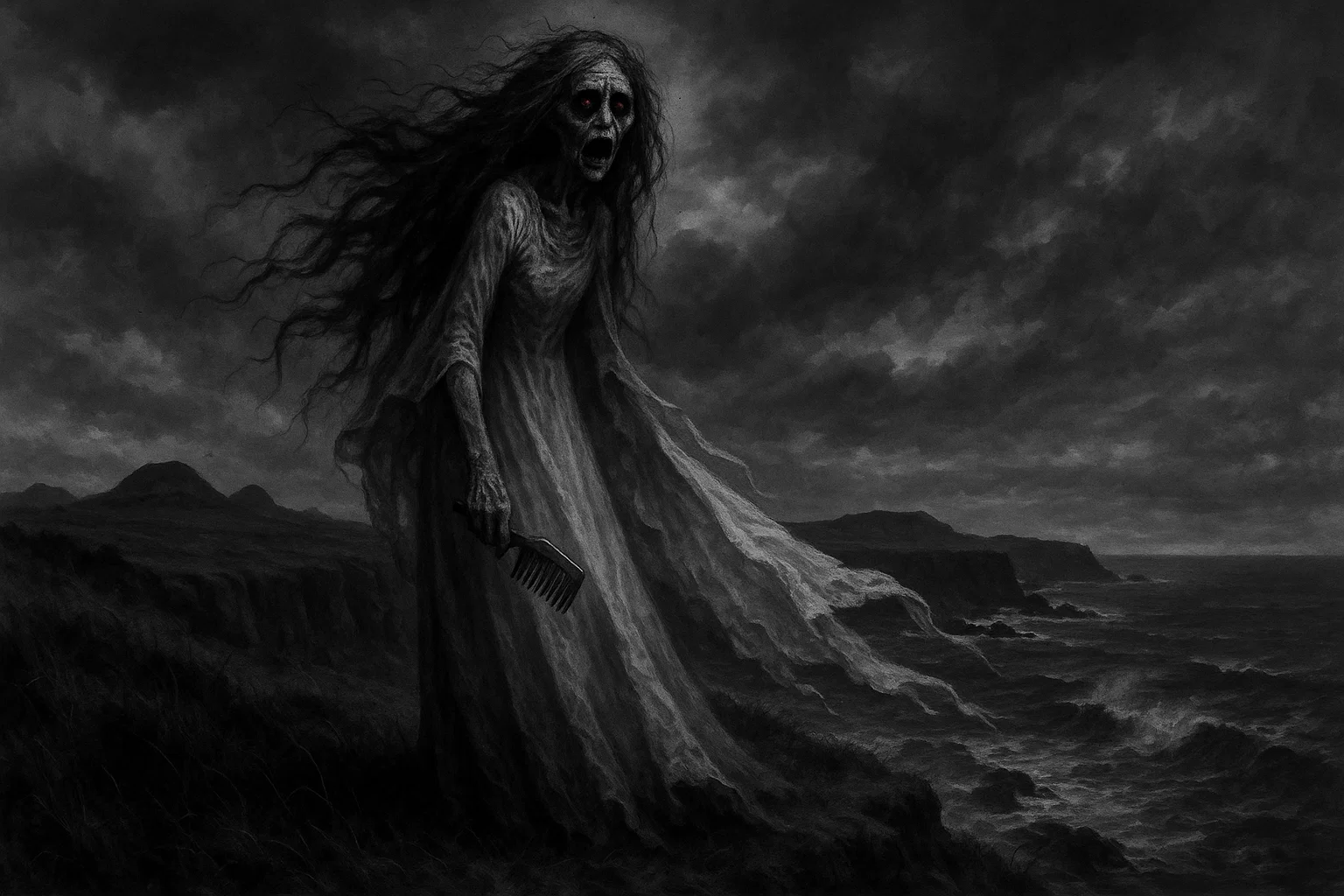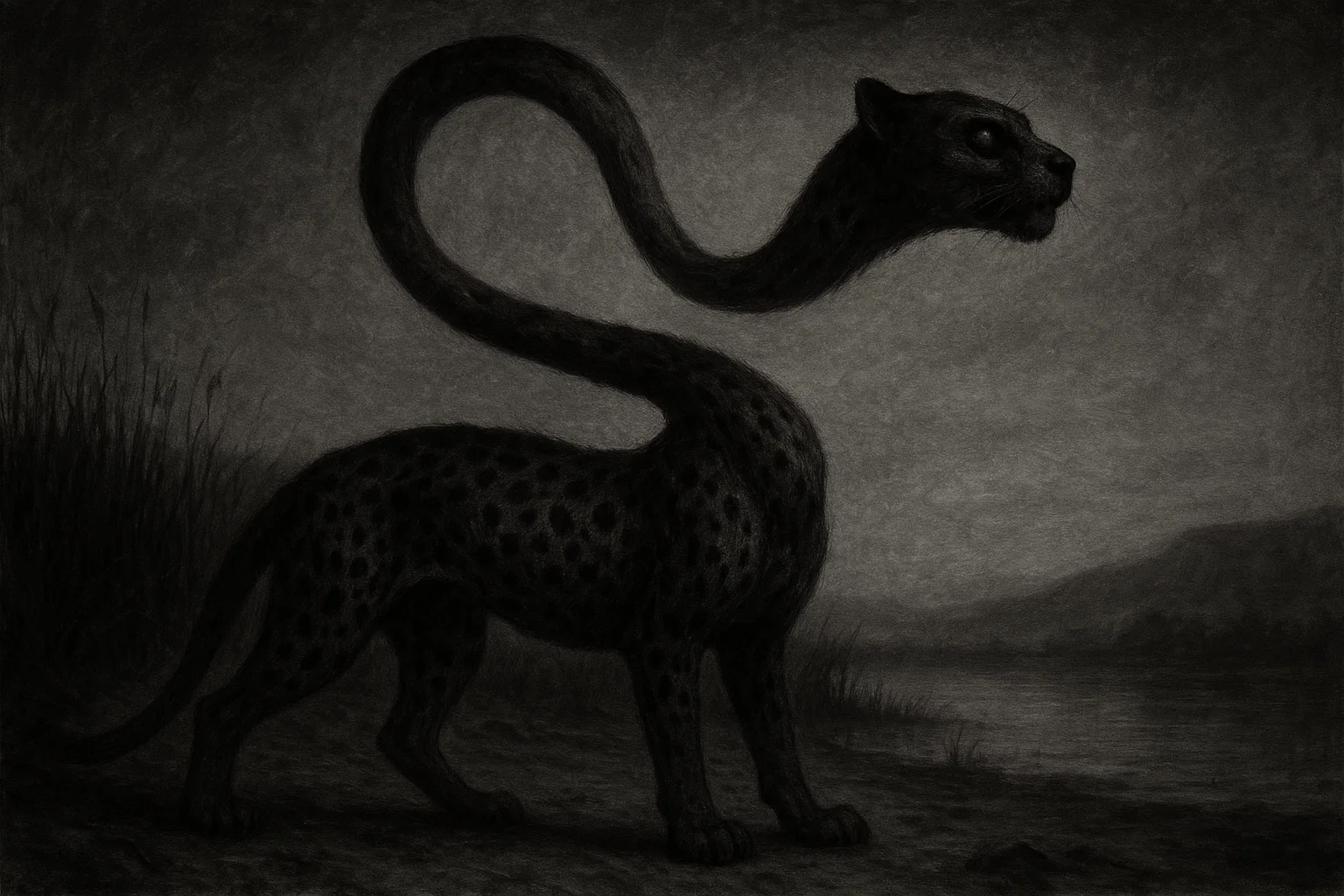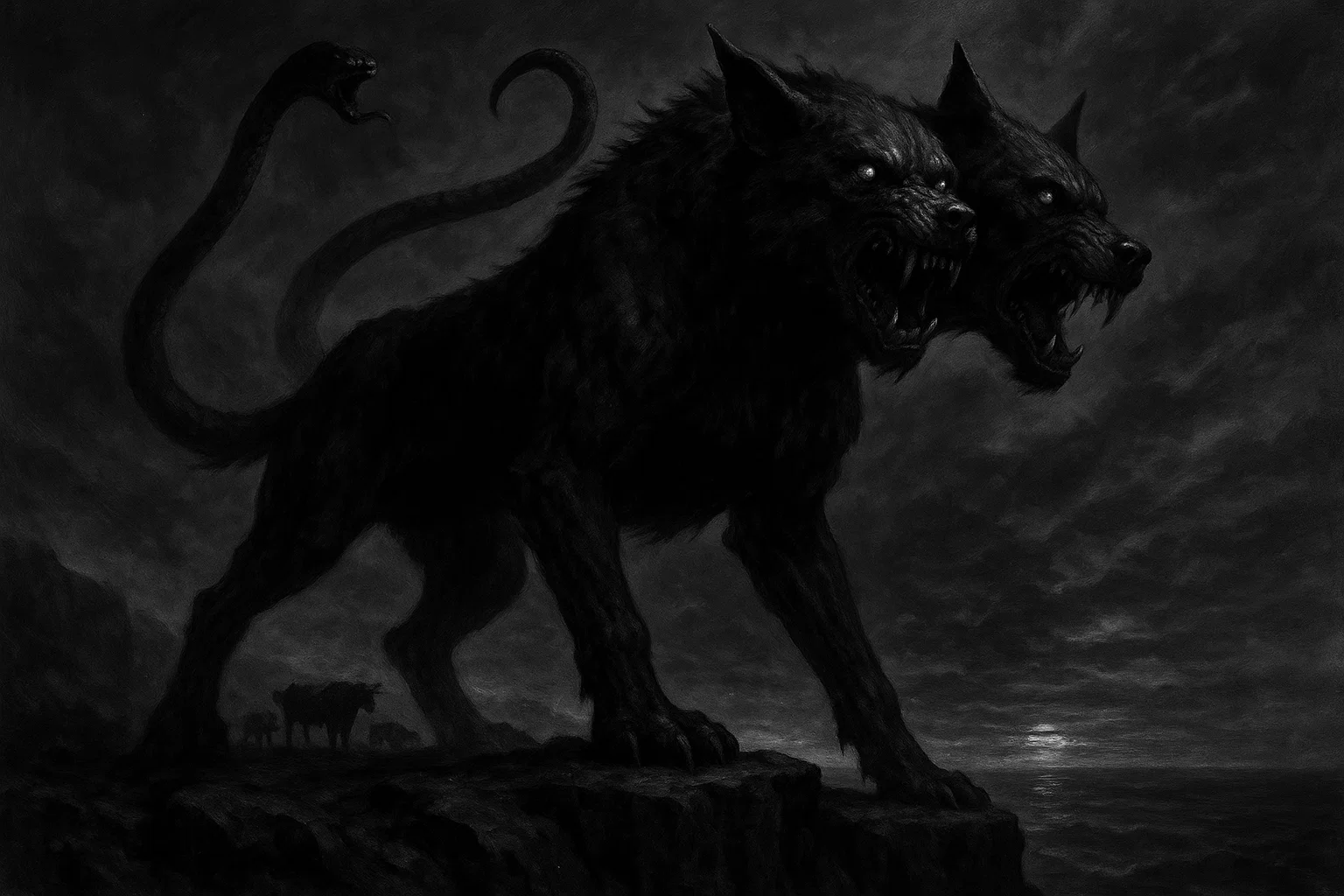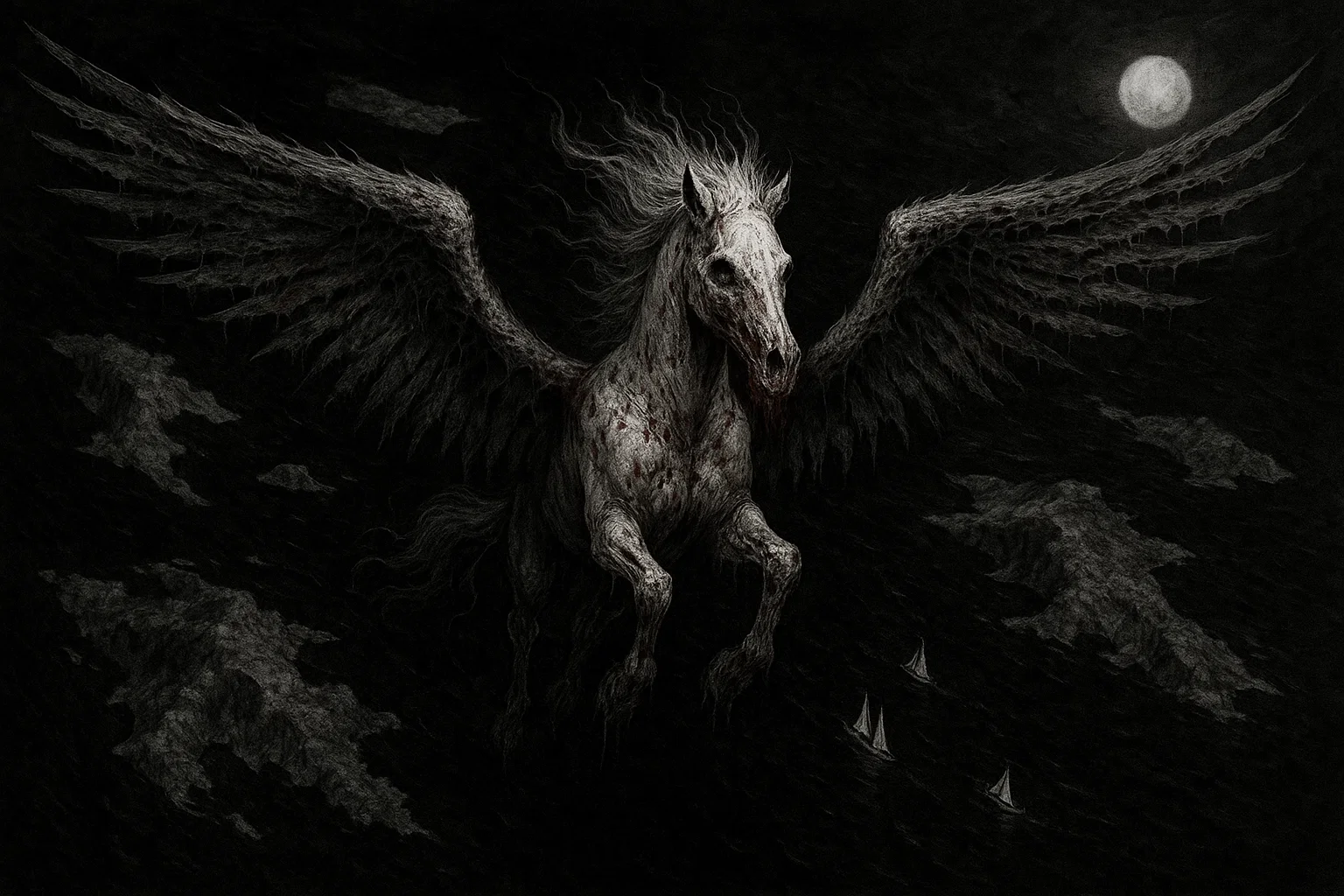The Sloss Furnaces haunting in Birmingham, Alabama, centers on James “Slag” Wormwood, a fictional foreman blamed for worker deaths in the early 1900s.
Built in 1881 by Colonel James Withers Sloss and opened on April 12, 1882, the 15-acre site at 20 32nd St N churned out pig iron until 1971. Now a National Historic Landmark (1981), it hosts tours, metal arts, and events like Furnace Fest.
The Slag Wormwood legend, created for the Sloss Fright Furnace (1998–2019), says he drove workers to death, falling into the Big Alice furnace in October 1906. Visitors hear screams, see shadows, and feel pushes from a burned man’s ghost yelling, “Get back to work!”
Summary
Historical Background
Sloss Furnaces, located at 20 32nd Street North in Birmingham, Alabama, stands as a monumental relic of the city’s industrial ascent during the late 19th and early 20th centuries.
Founded in 1881 by Colonel James Withers Sloss, a plantation owner from Mooresville, Alabama, and a prominent railroad developer, the furnaces capitalized “‘The Magic City’” due to its rapid growth.
The site’s establishment was strategic, leveraging Birmingham’s unique geological advantage: the close proximity of iron ore, coal, and limestone—essential ingredients for pig iron production. The Elyton Land Company donated 50 acres for the project, recognizing its potential to transform the region into an industrial powerhouse.
Construction began in 1881 under the direction of engineer Harry Hargreaves, a disciple of English inventor Thomas Whitwell, whose innovative blast furnace designs were renowned for efficiency.
Hargreaves oversaw the building of two Whitwell-type furnaces, each 60 feet tall and 18 feet in diameter, equipped with a heated air-blast system that marked a technological leap for the era. The first furnace roared to life on April 12, 1882, followed by the second in May 1883.
In their inaugural year, the furnaces produced 24,000 tons of high-quality pig iron, earning a bronze medal at the 1883 Southern Exposition in Louisville, Kentucky, for their superior output. This achievement underscored Sloss’s early dominance in the iron industry and helped Alabama rise to the fourth-highest pig iron-producing state by 1890.
In 1886, Colonel Sloss sold the company to a group of investors, and by 1899, it was reorganized as the Sloss-Sheffield Steel and Iron Company, focusing exclusively on pig iron due to the region’s raw materials being unsuitable for steel production.
The early 20th century saw significant advancements under superintendent James Pickering Dovel, who joined in 1909 and introduced 17 patented innovations, including gas cleaning equipment and improved furnace linings. These upgrades enhanced efficiency and safety, positioning Sloss as a leader in the industry.
By the 1920s, the furnaces produced 400 tons of pig iron daily with a workforce of approximately 500, supplying iron for skyscrapers, railroads, and automobiles across the United States.
The 1927 rebuild of Furnace No. 2 incorporated Dovel’s technologies, making it a model of early 20th-century industrial engineering and helping Sloss-Sheffield become the second-largest pig iron seller in the Birmingham District and among the largest globally.
The workforce at Sloss was diverse yet deeply segregated, reflecting the social dynamics of the time. African American laborers, many of whom were convicts leased from the state, faced the most dangerous tasks, such as working near the molten iron or in the company’s Coalburg mine.
In 1890, records indicate that 90 out of 1,000 convict laborers died due to horrific working conditions, including cave-ins and disease. White workers, often in supervisory roles, fared slightly better but still endured grueling 12-hour shifts in temperatures reaching 150°F, with poor ventilation and constant risk of burns or machinery accidents.
Notable tragedies include the 1882 deaths of Aleck King and Bob May, who suffocated in Furnace Number One while clearing ore and coke, and an unverified 1888 explosion in the blowing engine house that reportedly blinded six workers.
These incidents, documented in sources like The Birmingham Daily Age and W. David Lewis’s Sloss Furnaces and the Rise of the Birmingham District, highlight the perilous environment that fueled both the furnaces’ output and their haunting legacy.
The furnaces operated continuously until 1971, when stricter environmental regulations, particularly the Clean Air Act of 1970, and competition from cheaper foreign ore rendered them obsolete. Facing demolition, the Sloss Furnace Association, led by James R. Bennett, rallied to preserve the site.
In 1977, Birmingham voters approved a $3.3 million bond to fund restoration, and in 1981, Sloss Furnaces was designated a National Historic Landmark.
It opened as a public museum on Labor Day weekend in 1983, complete with a visitor center added in 2016 for $5.7 million, featuring a steel arch design that honors Birmingham’s industrial heritage. The museum now attracts over 100,000 visitors annually, offering insights into the city’s industrial past and its darker, haunted folklore.
You May Also Like: Hinton Ampner Haunting: A Tale of Terror in Hampshire
Documented Accidents and Strange Deaths
The working conditions at Sloss Furnaces during its operational years (1882–1971) were nothing short of brutal, characterized by extreme heat, dangerous machinery, and systemic exploitation, particularly of African American and convict laborers.
The furnaces, pivotal to Birmingham’s rise as an industrial hub, demanded a heavy toll from their workforce, with numerous documented accidents and strange deaths contributing to the site’s grim legacy and haunted reputation.
These incidents, coupled with local folklore, have woven a tapestry of eerie tales that persist in Alabama’s cultural narrative.
Harsh Working Conditions
Sloss Furnaces operated 24 hours a day, with workers enduring 12- to 14-hour shifts in temperatures soaring to 150°F near the molten iron of the blast furnaces.
The environment was suffocating, with poor ventilation, thick smoke, and the constant roar of machinery creating a disorienting and hazardous workplace.
Workers handled heavy equipment, such as charging bells and skip hoists, with minimal safety measures, risking burns, crush injuries, or falls from precarious catwalks. The air was laden with coal dust and toxic gases like carbon monoxide, which could cause dizziness or unconsciousness, increasing the likelihood of accidents.
The workforce was starkly segregated, reflecting the racial dynamics of the post-Reconstruction South.
White workers typically held supervisory or skilled roles, such as foremen or engineers, while African American laborers, many of whom were convicts leased from the state under Alabama’s notorious convict-lease system, were assigned the most perilous tasks.
These included shoveling ore, cleaning furnaces, or working in the company’s Coalburg and Flat Top mines, where conditions were even more dire.
In 1890, records from the Alabama Department of Corrections indicate that 90 out of 1,000 convict laborers died in Sloss-affiliated mines due to cave-ins, disease, or malnutrition, earning the mines a reputation as “death traps.”
Paid as little as 10 cents per hour, if at all, these workers faced systemic neglect, with no access to protective gear or medical care. Female workers, though rare, were occasionally employed in menial roles, such as cleaning, and faced additional harassment and unsafe conditions.
You May Also Like: Bathin the Demon Duke: Powers, Sigil, and Occult Influence
Accidents and Deaths
The perilous environment at Sloss Furnaces led to numerous documented accidents, many of which were marked by unusual circumstances that fueled local ghost stories.
According to W. David Lewis’s Sloss Furnaces and the Rise of the Birmingham District (1994), at least 60 workers died at the furnaces between 1882 and 1971, though the actual number is likely higher due to underreporting.
November 1882: Aleck King and Bob May’s Suffocation
On November 10, 1882, Aleck King (age 29) and Bob May (age 32), both African American laborers, were tasked with cleaning Furnace Number One during a maintenance shutdown.
Lowered into the furnace to remove ore and coke, they were overcome by residual carbon monoxide and smoke, falling to their deaths. The Birmingham Daily Age (November 11, 1882) reported that a crowd gathered to view their charred remains, which were pulled from the furnace with hooks.
No inquest was held, as such deaths were deemed commonplace.
Local folklore, as recorded by Kathryn Tucker Windham in 13 Alabama Ghosts and Jeffrey (1978), claims that workers saw King and May’s shadows lingering near Furnace Number One weeks later, accompanied by the sound of choking gasps.
A 1920s worker, quoted anonymously in the Birmingham Herald, claimed to have seen two figures “shoveling in the dark,” their eyes glowing faintly, leading to rumors that their spirits were trapped, eternally clearing the furnace.
September 1887: Theophilus Jowers’ Fiery Death
On September 9, 1887, Theophilus Jowers, a 28-year-old assistant foundryman at the nearby Alice Furnace, met a tragic end when he slipped from a platform while repairing a melting bell, falling into molten iron.
According to W. David Lewis’s Sloss Furnaces and the Rise of the Birmingham District (1994), only a shoe and part of his foot were recovered, with the rest of his body consumed by the 2,700°F liquid metal.
By October 1887, workers at Sloss Furnaces—where Jowers’ story migrated after Alice Furnace closed in 1905—reported seeing a tall, burned figure walking the hearth near Furnace Number One, appearing to inspect valves.
A 1927 worker, quoted in Kathryn Tucker Windham’s 13 Alabama Ghosts and Jeffrey (1978), described the figure: “It’s Jowers, making sure the fire’s right. His face is burned, but he’s calm, like he’s still on duty.”
The Birmingham Herald (October 20, 1887) noted that the sighting terrified the crew, who avoided the hearth at night, believing Jowers’ spirit was bound to the furnaces.
The Jowers legend grew, with some workers claiming he was pushed by a resentful colleague, a rumor that later inspired the fictional Slag Wormwood tale.
A 1930s story suggests Jowers’ ghost taps pipes to signal furnace issues, with workers reporting rhythmic clangs before equipment failures. This early encounter laid the foundation for Sloss’s haunted reputation, linking real tragedy to paranormal lore.
1888: Blowing Engine House Explosion (Unverified)
An oft-cited but poorly documented explosion in the small blowing engine house in 1888 reportedly left six workers blind.
The story, mentioned in the Haunted US and other secondary sources, lacks primary corroboration but describes a gas leak igniting during maintenance, with workers suffering severe burns to their faces and eyes. The lack of official records suggests either a cover-up by the company or exaggeration over time.
Birmingham folklore speaks of “blind ghosts” haunting the engine house, their moans echoing at dusk. A 1901 worker claimed to hear “sightless men crying for light,” linking the incident to paranormal activity.
The story gained traction during the Sloss Fright Furnace (1998–2019), with actors portraying eyeless specters to scare visitors.
You May Also Like: Who Is Andras, the Demon Who Sows Discord and Death?
1906: Methane Gas Incident
In October 1906, a methane gas explosion in a Sloss-affiliated mine killed eight workers, according to a brief mention in the Birmingham Post-Herald (October 5, 1906).
The blast, caused by poor ventilation, trapped workers underground, with rescuers finding only fragments of their bodies. The incident was quickly downplayed by the company, which avoided liability.
A chilling tale from The Ghost Doctor recounts that miners’ families reported hearing their loved ones’ voices calling from the Sloss tunnels months later.
A 1910 guard claimed to see “headless figures” carrying lanterns near the mine entrance, believed to be the explosion’s victims searching for escape. This story fueled the idea of a “ghostly crew” haunting Sloss’s underground passages.
1947: Boiler Room Collapse
On September 20, 1947, three supervisors—John Harris (52), Robert Lee (47), and William Tate (50)—were found unconscious in a locked boiler room at 11 p.m., per Birmingham Police logs.
They reported that a charred figure with glowing eyes appeared, shouting, “Push some steel!” before striking them. The Birmingham Post-Herald (September 21, 1947) confirmed minor concussions but no burns, with Harris telling police, “He was blackened, like he’d come from the fire, and locked the door on us.”
The supervisors, traumatized, refused night shifts thereafter. Workers began associating the figure with the Slag Wormwood legend, though it was still decades from being formalized, solidifying Sloss as a haunted furnace with a violent spectral presence.
1971: Samuel Blumenthal’s Mysterious Burns
On March 10, 1971, Samuel Blumenthal, a 60-year-old watchman, conducted a final patrol before Sloss’s closure.
Near Big Alice’s stairs at 1 a.m., he encountered a “half-man, half-demon” figure with charred skin and glowing eyes, per his deathbed account in the Birmingham News (March 15, 1971). The entity tried to push him up the stairs, then struck him, leaving third-degree burns on his arms despite the furnaces being inactive.
Blumenthal described a voice screaming, “Work!” and a stench of burning flesh. He died days later, with his story becoming one of Sloss’s most chilling tales, linking it to the Slag Wormwood legend, though the character was fictional.
You May Also Like: What Is Momo the Monster? Missouri’s Creepiest Legend
Strange Local Stories
These accidents, combined with the oppressive conditions, gave rise to a rich body of local folklore that blends fact and fiction, amplifying Sloss’s haunted reputation.
The Water Tank Ghost (1897): A lesser-known tale from the Birmingham Herald (August 6, 1897) describes a worker, John S., seeing a young man’s ghost near a water tank, holding women’s shoes and sobbing. Locals speculated this was a worker who died in a fall, haunted by guilt over a lost love. The story, though unverified, inspired tales of a “weeping spirit” that still lingers near Sloss’s water towers.
The Ghostly Crew: Multiple accounts, including a 2015 Ghost Chasers International investigation, report shadows of workers moving ore in the casting shed, accompanied by clanging chains. A 1920s legend claimed these were spirits of convicts who died in mines, doomed to labor eternally. The story was so pervasive that workers avoided the shed at night.
The Furnace Keeper’s Curse: A 1930s tale, documented in The Lady Dicks, suggests that a worker who died in a furnace explosion cursed Sloss, vowing that “no fire would rest” until justice was served for exploited laborers. This story is tied to reports of unexplained fires flaring up in dormant furnaces, particularly in the 1950s.
Who Is the Ghost of James “Slag” Wormwood?
James “Slag” Wormwood is the heart of the Sloss Furnaces haunting, but he’s not real. Made up for the Sloss Fright Furnace in 1998, Wormwood was a nasty foreman on the graveyard shift (sunset to sunrise) in the early 1900s, bossing 150 workers, mostly poor Black and immigrant folks.
The story says he pushed men so hard in 120°F heat that 47 died—way more than other shifts. Workers burned, fell, or went blind from steam under him.
On October 4, 1906, Wormwood slipped from Big Alice’s catwalk into molten iron, dying instantly. Rumors said workers pushed him, sick of his cruelty, but no one was charged.
His ghost, a burned figure, haunts Sloss, shouting, “Get back to work!” or “Push some steel!” A 1926 watchman was shoved, hearing a voice, per Birmingham Police records.
In 1947, three supervisors were knocked out in a boiler room, blaming a burned man. In 1971, watchman Samuel Blumenthal met a “half-man, half-demon” that burned him.
David Arias, Sloss’s director, says Wormwood’s fake, built on Theophilus Jowers’ real death at Alice Furnace (not Sloss) on September 9, 1887, when he fell into molten iron.
Jowers’ ghost reportedly moved to Sloss after Alice closed in 1905. Kathryn Tucker Windham’s 1978 book spread the Slag Wormwood tale, making it a top Alabama ghost story.
You May Also Like: 7 Reasons Moñái Might Be the Weirdest Cryptid in the World
Ghost Sightings and Testimonies
Sloss Furnaces is a haunted furnace with creepy stories since the 1880s. Over 100 paranormal reports, mostly in September–October, fill Birmingham Police records.
From Slag Wormwood’s angry apparition to shadowy worker spirits, here are the top sightings that give this Alabama ghost story its chills.
| Date | Witness(es) | Location | Description |
|---|---|---|---|
| October 1887 | Multiple Workers | Furnace Number One | Tall, burned figure resembling Theophilus Jowers seen checking valves, accompanied by tapping sounds. Workers avoided the hearth at night. |
| August 5, 1897 | John S. (Worker) | Water Tank | Saw a young man’s ghost holding women’s shoes, sobbing audibly. Described as standing motionless, crying. |
| October 12, 1926 | Thomas Reed (Watchman) | Big Alice | Felt a hard shove from behind, bruising ribs, heard a voice growl, “Get back to work!” No one was present. Reed quit the next day. |
| September 20, 1947 | John Harris, Robert Lee, William Tate (Supervisors) | Boiler Room | Found unconscious after a charred figure with glowing eyes shouted, “Push some steel!” and struck them. Door was locked from inside. |
| March 10, 1971 | Samuel Blumenthal (Watchman) | Big Alice Stairs | Encountered a “half-man, half-demon” with burned skin, which tried to push him up stairs, leaving third-degree burns on arms despite inactive furnaces. Died days later. |
| July 15, 1990 | Clara M. (Tour Guide) | Slag Pit | Saw a faceless figure, heard a voice shout, “Leave now!” Accompanied by a sudden cold draft. |
| September 10, 1985 | Lisa T. (Tourist) | Casting Shed | Heard “Push some steel!” and saw a shadow moving ore across the shed. Felt a heavy presence. |
| October 8, 2000 | Fox’s Scariest Places Team | Boiler Room | Recorded EVPs of “Work harder!” and footsteps, with thermal anomalies suggesting a presence. Described as an angry foreman-like voice. |
| October 18, 2003 | Kevan Walden (Investigator) | Slag Pit | Slapped across the face by an unseen force, leaving a red welt. Heard chains rattling and a voice whisper, “Leave the pit.” EVPs captured screams. |
| October 20, 2012 | Sarah T. (Tourist) | Tunnels | Saw shadowy figures of workers, felt freezing air despite warm surroundings. Shadows appeared to move ore. |
| September 12, 2015 | Chip Coffey (Ghost Chasers International) | Slag Pit | Sensed a legless spirit, possibly a crushed worker. Blood appeared on hands without cuts, recorded EVP saying, “Mind the heat!” amid screams. |
| October 15, 2019 | Mark L. (Security Guard) | Boiler Room | Heard “Get back to work!” and saw a glowing, burned figure. Felt intense heat briefly. |
| September 15, 2023 | Emma Rogers (UAB Student) | Catwalks (Big Alice) | Felt a hard shove nearly causing a fall, heard screams like “men in pain” from the furnace, saw a shadow cross the hearth. Group noted cold spots. |
| March 3, 2024 | David K. (Visitor) | Catwalks (Slag Pit) | Felt a burning sensation on arm, heard chains rattling below. No visible source for the burn. |
| October 10, 1962 | James Carter (Worker) | Casting Shed | Saw multiple shadowy figures pushing carts, heard clanging metal. Reported to supervisors, who dismissed it. |
| June 22, 1980 | Mary H. (Tourist) | Water Tower | Heard faint sobbing and saw a figure in old work clothes vanish near the tower. Described a “sad presence.” |
| November 5, 2005 | Alabama Paranormal Society Team | Furnace Number Two | Captured EVPs of “Mind the slag!” and saw a flickering light moving along the catwalk. No electrical source found. |
Theories Explaining the Sloss Furnaces Haunting
Why is Sloss Furnaces so spooky? Is Slag Wormwood’s spectral figure real, or something else? Here are the main ideas, split into paranormal and rational theories:
Paranormal Theories
Cursed Foreman’s Wrath
The legend of a cruel foreman, driven by the relentless demands of Sloss’s pig iron production, suggests a spirit cursed to roam the furnaces after a fiery demise. This figure, embodying the harsh authority of the Industrial Revolution, is said to linger in the shadows of the towering furnaces, enforcing labor with spectral commands.
The intense pressure on foremen to meet quotas in the 1880s–1900s, often at the cost of worker safety, could have bound such a spirit to the site, manifesting in aggressive encounters.
Why It Fits: The furnaces’ history of brutal management, where foremen pushed workers through grueling 12-hour shifts in 150°F heat, supports the idea of a resentful spirit. Reports of voices barking work orders in the dark catwalks align with the era’s oppressive labor dynamics. The cultural narrative of a vengeful foreman resonates with Birmingham’s industrial folklore, where tales of wronged souls were common among workers.
Why It Doesn’t: The lack of a specific, documented foreman’s death in a furnace undermines this theory. The story feels more like a fictional archetype, crafted to personify the site’s harsh past, rather than a verifiable event. Many reported encounters could stem from imagination or environmental cues rather than a singular spirit.
Likelihood: Low. While the idea captures the site’s labor struggles and storytelling tradition, the absence of a confirmed historical figure and the speculative nature of a “curse” make this less plausible. It thrives more as folklore than fact.
Lingering Worker Torment
The souls of workers, trapped by the agony of their deaths in Sloss’s fiery or crushing accidents, may haunt the furnaces, unable to escape their industrial prison.
The site’s history of over 60 fatalities, from burns to machinery mishaps, suggests that the trauma of these laborers—many African American or convict workers—could manifest as ghostly figures performing endless tasks, like shoveling ore or tending the hearth.
Why It Fits: The sheer number of deaths, combined with the dehumanizing conditions of 150°F heat, toxic gases, and 14-hour shifts, creates a compelling case for spirits bound by suffering. Reports of shadowy figures moving materials or faint sounds of labor in the casting shed echo the repetitive toil of Sloss’s workforce. The cultural weight of exploited laborers in Birmingham’s history adds emotional resonance to this theory.
Why It Doesn’t: Without specific identities tied to most sightings, it’s hard to connect apparitions to individual workers. Many reports could be misinterpretations of natural phenomena, and the idea of trapped souls relies on unprovable metaphysical assumptions rather than concrete evidence.
Likelihood: Low-Moderate. The high death toll and oppressive conditions make this theory emotionally compelling, but the lack of verifiable connections to specific spirits and the possibility of rational explanations reduce its plausibility.
You May Also Like: The Slit-Mouthed Woman | Horror Story
Echoes of Industrial Trauma
The furnaces’ extreme environment—molten iron at 2,700°F, deafening machinery, and constant danger—may have imprinted the terror and pain of workers onto the site, creating a looping echo of past events. These “residual hauntings” manifest as repetitive sounds, like clanging metal or distant cries, replaying the chaos of Sloss’s operational years without conscious intent.
Why It Fits: The intense energy of Sloss, with its roaring furnaces and life-or-death stakes, could theoretically trap emotional imprints. Reports of consistent sounds, like metal striking or muffled shouts near the slag pit, align with the repetitive nature of industrial work. The theory matches the site’s unique intensity, where workers faced daily peril, making it a prime candidate for such phenomena.
Why It Doesn’t: Many Sloss encounters involve interactive experiences, like physical shoves or directed voices, which don’t fit the passive nature of residual hauntings. The theory also hinges on a speculative concept of energy imprints, lacking scientific backing, and could be explained by the site’s acoustics or decay.
Likelihood: Low. While the industrial intensity of Sloss supports this idea, the interactive nature of many reports and the lack of empirical support for energy imprints make it less likely than rational alternatives.
Fire-Drawn Dark Force
The hellish heat of Sloss’s furnaces, likened to a gateway to the underworld in local tales, may have attracted a malevolent entity that feeds on the site’s history of suffering. This force, distinct from human spirits, could manifest as a menacing presence, causing physical harm or instilling dread in visitors exploring the tunnels and catwalks.
Why It Fits: The furnaces’ fiery core, reaching temperatures that melted iron, mirrors mythological depictions of infernal realms, resonating with Birmingham’s folklore about fire drawing dark entities. Reports of aggressive encounters, like sudden burns or shoves in the boiler room, suggest a force beyond human spirits. The site’s grim history of exploitation and death provides ample emotional fuel for such an entity.
Why It Doesn’t: Most sightings describe human-like figures or work-related voices, not overtly demonic entities. The idea of a fire-drawn force is speculative and rooted in folklore rather than evidence. Physical phenomena could be attributed to environmental hazards or imagination rather than a supernatural entity.
Likelihood: Very Low. The theory’s dramatic appeal fits Sloss’s hellish aesthetic, but the lack of consistent non-human entity reports and reliance on cultural myths make it the least plausible of the paranormal explanations.
Rational Theories
Amplified Folklore for Tourism
The haunting tales of Sloss, particularly the fictional foreman narrative, were crafted and exaggerated to boost tourism and fund the site’s preservation as a museum since 1983. Birmingham’s tradition of ghost stories, combined with the site’s industrial decay, encourages visitors to interpret natural phenomena as paranormal, amplifying the furnaces’ spooky reputation.
Why It Fits: The creation of a dramatic foreman legend aligns with the site’s transformation into a tourist attraction, drawing over 100,000 visitors annually with ghost tours and events like Furnace Fest. The cultural appetite for ghost stories in Alabama, rooted in oral traditions, primes visitors to expect hauntings, turning creaks or shadows into spectral encounters. The site’s marketing as a haunted landmark fuels this cycle.
Why It Doesn’t: Reports of paranormal activity date back to the 1880s, long before tourism efforts, suggesting some experiences predate amplification. Consistent patterns in sightings, like labor-related voices, hint at phenomena not entirely explained by marketing or expectation.
Likelihood: High. The deliberate crafting of ghost stories for tourism, combined with Birmingham’s storytelling culture, strongly explains the haunting’s prominence. While early reports suggest some genuine phenomena, the modern narrative is heavily shaped by tourism, making this a highly likely explanation.
You May Also Like: My Wife Likes To Play With Me | Horror Story
Industrial Environment Misinterpretations
The decaying infrastructure of Sloss—rusted pipes, creaking catwalks, and wind whistling through tunnels—creates sounds and shadows mistaken for ghosts. The site’s dim lighting and reflective metal surfaces can trigger pareidolia, where visitors see human-like figures, while lingering gases or dust may cause disorientation, fueling ghostly perceptions.
Why It Fits: The 15-acre site’s industrial decay naturally produces eerie noises, like clanging metal or hissing air, that mimic paranormal activity. The complex layout, with dark tunnels and towering furnaces, enhances visual misinterpretations, especially during night tours. Historical hazards, like gas leaks, could explain dizziness or hallucinations that workers or visitors attribute to spirits.
Why It Doesn’t: Some reports, like physical sensations or clear voices, are harder to dismiss as mere environmental effects. The consistency of specific phrases and interactions across decades suggests phenomena beyond random noises or visuals, challenging a purely environmental explanation.
Likelihood: High. The site’s physical state—aging, noisy, and visually deceptive—makes misinterpretations a primary driver of haunting reports. While some incidents resist this explanation, the industrial environment’s impact on perception is a compelling and evidence-based cause.
Heightened Psychological Expectation
The grim history of Sloss, with its high death toll and brutal labor conditions, primes visitors to expect paranormal activity, turning ordinary stimuli into ghostly experiences. The site’s reputation as a haunted landmark, reinforced by night tours and media, creates a psychological feedback loop where fear and anticipation amplify perceptions of the supernatural.
Why It Fits: The knowledge of Sloss’s tragic past, including numerous worker deaths, sets a spooky tone for visitors, making them hyper-aware of sounds or shadows. Night tours, conducted in low light with tales of hauntings, heighten suggestibility, leading to reports of apparitions or voices. This aligns with psychological principles where expectation shapes perception, especially in a foreboding setting like Sloss.
Why It Doesn’t: Early reports from workers, before the site’s haunted reputation was widely known, suggest spontaneous experiences not driven by expectation. Physical phenomena, like burns or shoves, are less easily explained by psychology alone, hinting at other factors.
Likelihood: High. Psychological expectation is a powerful explanation for many modern sightings, given Sloss’s marketed mystique and grim history. While early incidents suggest some genuine phenomena, this theory accounts for the majority of tourist-driven reports.
Exaggerated Historical Narratives
Tragic accidents at Sloss, such as workers dying in furnaces or mines, were embellished over time into haunting tales to captivate audiences and support the site’s preservation. Oral traditions among Birmingham’s workers evolved into exaggerated ghost stories, with real events spun into supernatural legends to draw attention and funding to the museum.
Why It Fits: The furnaces’ history of fatalities, combined with Alabama’s storytelling culture, provided fertile ground for embellished tales. The preservation efforts in the 1970s, requiring significant funding, leveraged these stories to attract visitors, turning accidents into ghostly narratives. The consistency of labor-themed hauntings reflects how real tragedies were amplified into folklore.
Why It Doesn’t: Some early accounts, predating the museum and tourism efforts, indicate genuine worker experiences, suggesting not all stories are exaggerated. The specificity of certain phenomena, like work-related commands, points to a pattern that may not be solely fabricated.
Likelihood: High. The transformation of historical tragedies into haunting tales aligns with the site’s cultural and financial motivations. While some early reports may reflect authentic experiences, the exaggeration of narratives for public appeal is a highly plausible driver of the haunting legend.
Sloss Furnaces as a Paranormal Destination
Sloss Furnaces is a top pick for Alabama ghost stories. Since becoming a museum in 1983, it pulls in 100,000 visitors yearly, per Sloss Furnaces Foundation.
Free self-guided tours (Tuesday–Saturday, 10 AM–4 PM) let you explore catwalks and tunnels where Slag Wormwood’s spectral figure hides. Guided tours ($10) share the haunted history, while night tours ($25) crank up the scares.
The Sloss Fright Furnace (1998–2019) drew 1 million with actors as Wormwood, closing in 2022 to keep school tours safe, per Howard Koplowitz (Birmingham News, 2022).
You May Also Like: The White Lady of Hohenzollern: A Harbinger of Death and Disaster?
Events like Furnace Fest, Dia de los Muertos, and 2024’s VEX Robotics “Haunted” pack the site. Ghost hunters book paranormal investigations ($50–$100), using EVP recorders near Big Alice.
In 2023, a Magic City Art Connection visitor heard chains in the boiler room, per Birmingham Times. Metal arts classes and weddings use the rusty vibe, but night events spark the most paranormal activity. Local shops sell Sloss Furnaces postcards with Wormwood’s face, making it a haunted Birmingham gem.
Comparison with Similar Hauntings
Sloss Furnaces shares its haunted reputation with other industrial or tragic sites:
| Haunted Place | Location | Ghost Name(s) | Type of Activity | Historical Context | Similarity to Sloss |
|---|---|---|---|---|---|
| Pickens County Courthouse | Carrollton, AL | Henry Wells | Visual (face), auditory | 1876 arson, lynching | Named ghost, injustice theme |
| Drish House | Tuscaloosa, AL | Sarah Drish | Visual (fires), auditory | 1837 plantation, death | Tragic figure, industrial era |
| Lizzie Borden House | Fall River, MA | Borden family | Visual, auditory, tactile | 1892 murders | Specific figures, violent death |
| Whaley House | San Diego, CA | Yankee Jim | Visual, auditory | 1857 execution | Wrongly accused, vengeful ghost |
| Lemp Mansion | St. Louis, MO | Lemp family | Visual, auditory, tactile | 19th-century suicides | Industrial tragedy, multiple spirits |
| Winchester Mystery House | San Jose, CA | Rifle victims | Visual, auditory | 1884 mansion, guilt | Supernatural imprints, industry tie |
| Carnton Mansion | Franklin, TN | Soldiers | Visual, auditory | 1826 plantation, war | Worker deaths, collective trauma |
| McRaven House | Vicksburg, MS | Soldiers | Visual, auditory | 1797 home, war | Historical violence, apparitions |
| Waverly Hills | Louisville, KY | Patients | Visual, auditory, tactile | 1910 sanatorium, TB | Institutional, multiple ghosts |
| Kali Oka Plantation | Saraland, AL | Woman, child | Visual, auditory | 1895 tragedy | Tragic figures, industrial era |
| Lucas Tavern | Montgomery, AL | Eliza Lucas | Visual, auditory | 1820 tavern, death | Benign ghost, historical site |
| Gaineswood Plantation | Demopolis, AL | Evelyn Carter | Auditory, visual | 1843 plantation, death | Named ghost, Southern history |
Conclusion
Sloss Furnaces in Birmingham, Alabama, is a haunted landmark where steel and spirits collide. The James “Slag” Wormwood legend, though made-up, echoes the real pain of workers like Theophilus Jowers, who died in its fiery depths from 1882 to 1971.
From 1887 sightings to 2023 screams near Big Alice, this paranormal hotspot fuels Alabama ghost stories. Shadows, burns, and ghostly voices—whether Slag Wormwood or trapped worker spirits—make Sloss eerie.
Tours, Furnace Fest, and paranormal investigations keep it buzzing, but the catwalks hold dark secrets. Visit Sloss Furnaces, and you might hear Wormwood’s ghost yell, “Push some steel!”—a chilling piece of haunted Birmingham history.

